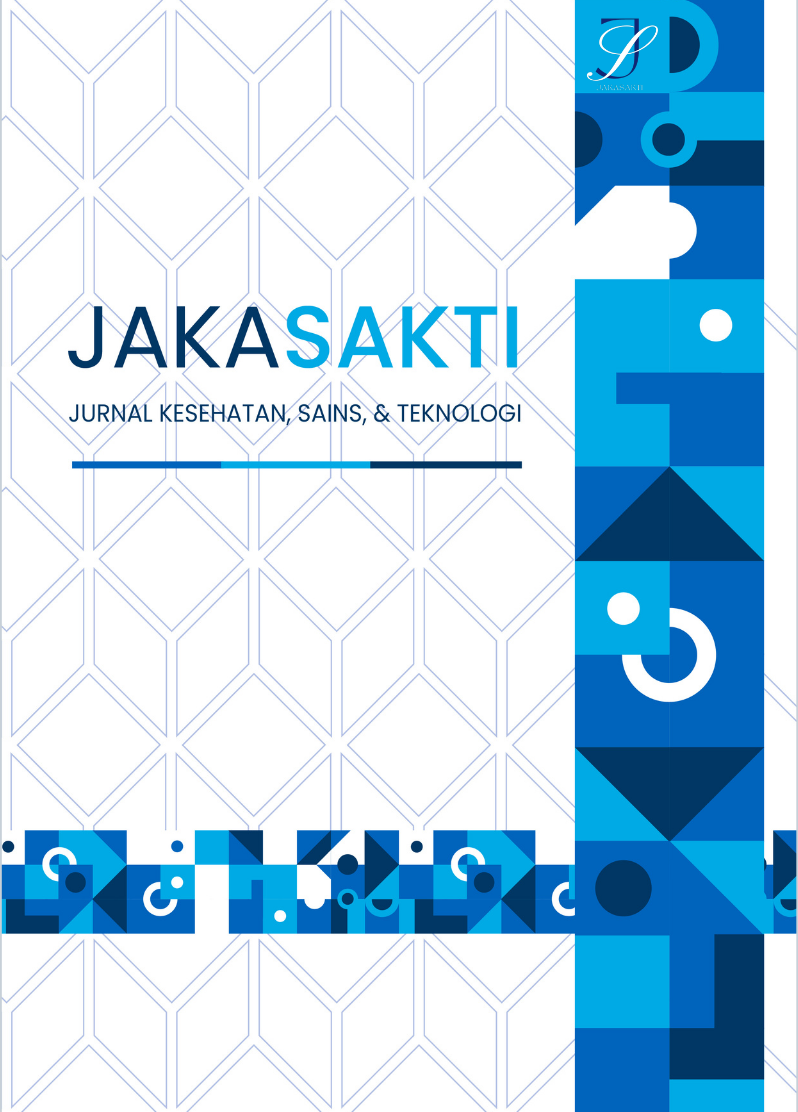Hypertension Exercise: A Non-Pharmacological Strategy for Reducing Blood Pressure in Adults with Hypertension
Main Article Content
Abstract
Hypertension is recognized as a leading contributor to cardiovascular diseases and is frequently labeled a "silent killer" due to its lack of clear symptoms, despite its significant impact on global illness and death rates. This research aimed to evaluate the influence of such exercise on blood pressure in adults diagnosed with hypertension. A pre-experimental design utilizing a one-group pretest–posttest method was applied, involving 43 participants selected via purposive sampling based on set inclusion criteria. The data were examined using the Shapiro–Wilk test for normality and the Wilcoxon Signed Rank Test for hypothesis testing. Findings revealed that prior to the intervention, the median systolic pressure was 148 mmHg, and the median diastolic pressure stood at 88 mmHg. Following the exercise intervention, the systolic median dropped to 141.75 mmHg and the diastolic to 84 mmHg. Statistical analysis with the Wilcoxon test returned a p-value of 0.000 (below 0.05) for both measures, indicating a statistically significant change post-intervention. These outcomes demonstrate that hypertension exercise can be an effective method for lowering blood pressure in hypertensive adults. The results support the broader adoption of non-drug-based strategies in communities to help manage and control hypertension.
Article Details

This work is licensed under a Creative Commons Attribution-NonCommercial-ShareAlike 4.0 International License.
![]()
This work is licensed under a Creative Commons Attribution-NonCommercial-ShareAlike 4.0 International License.
References
Auliyah Nurfauziah. (2021). Kepatuhan Penderita Hipertensi Dalam Menjalani Pengobatan Di Wilayah Kerja Puskesmas Kajang Kabupaten Bulukumba [Universitas Islam Negeri Alauddin]. https://repositori.uin-alauddin.ac.id/20205/1/NURFAUZIAH AULYAH_70200116116.pdf
Cornelissen, V. A., & Smart, N. A. (2013). Exercise training for blood pressure: a systematic review and meta-analysis. Journal of the American Heart Association, 2(1), 1–9. https://doi.org/10.1161/JAHA.112.004473
Frank J. Infurna, Dnis Gerstorf, M. E. L. (2025). Midlife in the 2020s: Oppurtunities and Challenges. Physiology & behavior, 176(3), 139–148. https://doi.org/10.1037/amp0000591.Midlife
Hao, Z., Tran, J., Lam, A., Yiu, K., & Tsoi, K. (2025). Aerobic, Resistance, and Isometric Exercise to Reduce Blood Pressure Variability: A Network Meta-Analysis of 15 Clinical Trials. Journal of Clinical Hypertension, 27(5). https://doi.org/10.1111/jch.70050
Kemenkes. (2023). Pedoman Pengendalian Hipertensi di Fasilitas Kesehatan Tingkat Pertama 2024. Kemenkes, 1–71.
Lestari, M. P., & Sari, D. P. (2024). Medication adherence and therapeutical outcome in hypertension patients at the Mlati II health center. Media Ilmu Kesehatan, 13(1), 11–16. https://doi.org/10.30989/mik.v13i1.1237
Lydia, A. et all. (2023). Panduan Promotif dan Preventif Hipertensi 2023. Indonesia Society of Hypertension Perhimpunan Dokter Hipertensi indonesia, 50–51.
Novianti ita, Salman, & Laily, Ii. (2022). Hubungan Tingkat Pengetahuan, Sikap, dan Dukungan Keluarga Terhadap Kepatuhan Minum Obat Penderita Hipertensi Di Puskesmas Batujaya. Jurnal Ilmu Kefarmasian, 3(2), 349–354. https://doi.org/https://doi.org/10.31764/lf.v3i2.9398
Pradono, J., Kusumawardani, N., & Rachmalina, R. (2020). Pembunuh Terselubung Di Indonesia. In Badan Penelitian dan Pengembangan Kesehatan Kementerian Kesehatan RI. https://repository.kemkes.go.id/book/10
Prihatin, K., Fatmawati, B. R., & Suprayitna, M. (2022). Faktor-Faktor Yang Mempengaruhi Kepatuhan Berobat Penderita Hipertensi. Jurnal Ilmiah STIKES Yarsi Mataram, 10(2), 7–16. https://doi.org/10.57267/jisym.v10i2.64
Rasiman, N. B., & Ansyah, A. (2019). Pengaruh Senam terhadap Perubahan Tekanan Darah pada Lansia. Pustaka Katulistiwa, 1(1), 6–11. https://journal.stik-ij.ac.id/index.php/Keperawatan/article/view/14
Safitri, W., & Astuti, H. P. (2017). Pengaruh senam hipertensi terhadap Gondangrejo. Jurnal Kesehatan Kusuma Husada, 129–134.
Samosir, A., & Siagian, E. (2021). Hubungan Kepatuhan Pencegahan Komplikasi Hipertensi dengan Tekanan Darah Pada Penderita Hipertensi. Nutrix Journal, 9(1).
Triani, R., Tasalim, R., Rahman, S., & Wijaksono, M. (2025). Relationship Between Education Level and Elderly Compliance in Hypertension Treatment in The Work Area of Datah Kotou Community Health Center. Indogenius, 4(2), 456–466. https://doi.org/10.56359/igj.v4i2.589
Werdhani, R. A. (2017). Frekuensi Keteraturan Senam dan Penurunan Tekanan Darah Anggota Klub Jantung Sehat Pondalisa, Jakarta Tahun 2000 - 2005. Kesmas: National Public Health Journal, 1(5), 209. https://doi.org/10.21109/kesmas.v1i5.292
WHO. (2023). Hypertension. World Health Organization. https://www.who.int/news-room/fact-sheets/detail/hypertension?utm_source=chatgpt.com
